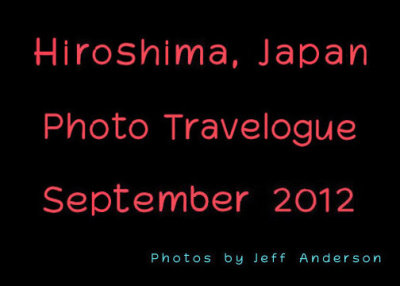
Hiroshima, Japan Photo Travelogue cover page. |

Map of Japan with the star indicating Hiroshima. |
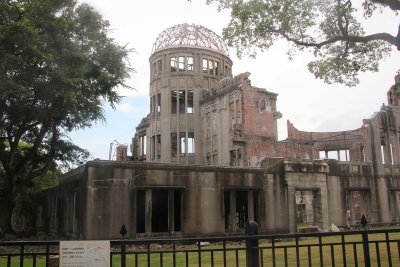
View of the A-Bomb Dome, which is the ruins from the August 6, 1945 atomic bombing of the Prefecture Industrial Promotion Hall. |
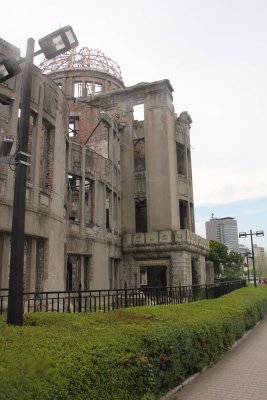
Side view of the A-Bomb Dome. Because the bomb blast was almost directly above the dome, some of the walls remained standing. |
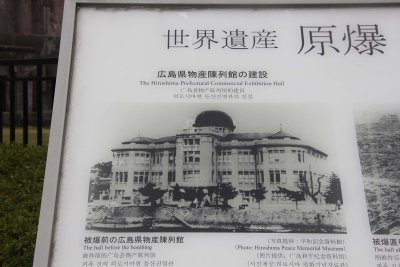
This is what the A-Bomb Dome looked like before the atomic bombing. It was designated as a UNESCO World Heritage site in 1996. |
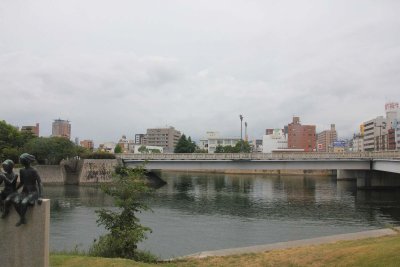
The Aioi Bridge, which traverses the Ota River. |
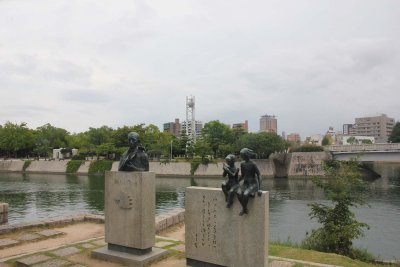
Memorial statues in front of the Ota River, the main river that flows through Hiroshima. |
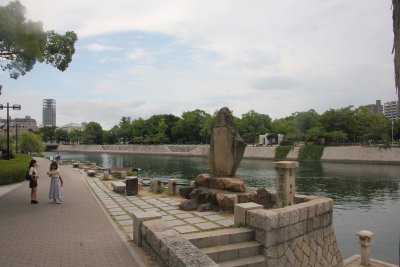
Pedestrian path along the river. |
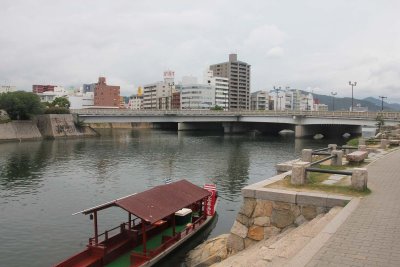
Ota River with the Aioi Bridge in the background. |
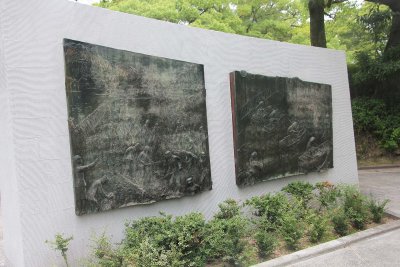
Panels memorializing student workers who were killed in the atomic blast. |
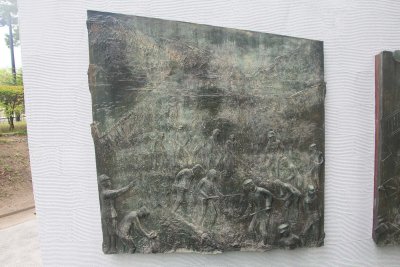
Students in Hiroshima went to work in factories to contribute to the war effort. |
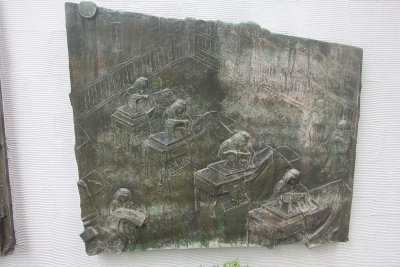
Young women working on sewing machines. |
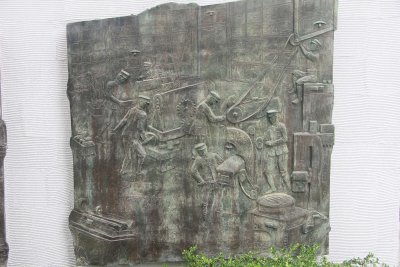
Young men in a manufacturing plant. |
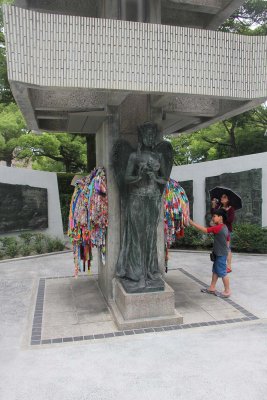
A angel with wings statue in memory of those who died at Hiroshima. |
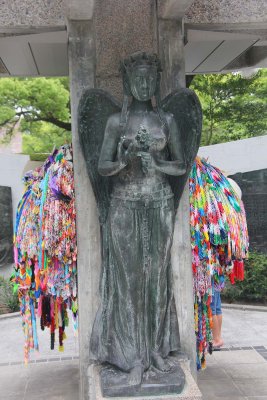
Close-up of the statue. |

Colorful peace cranes, which are for sale, are a powerful symbol of Hiroshima. |
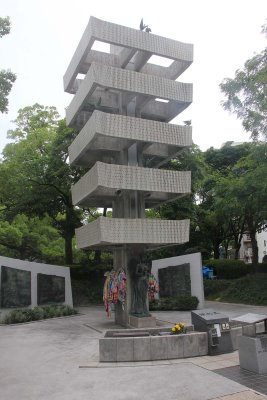
Memorial Tower to the Mobilized Students over the angel with wings statue. |
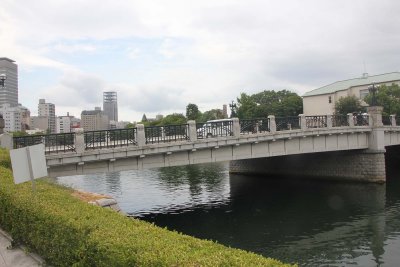
Another bridge that traverses the Oti River. |
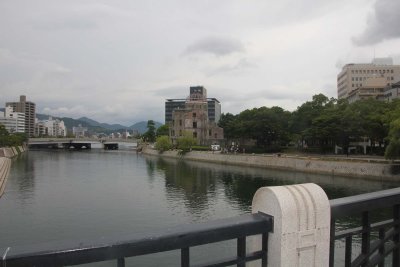
View from the bridge. |
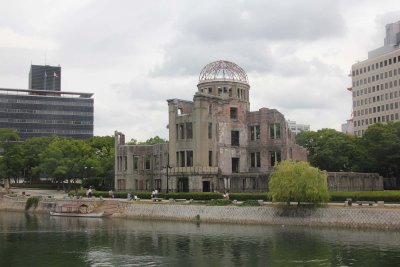
The A-bomb Dome in the background. |
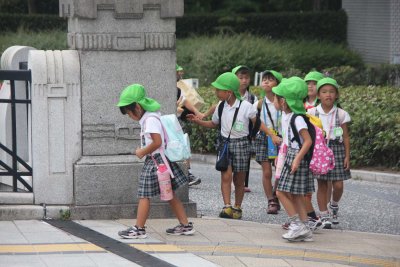
These adorable Japanese school girls were on an outing at the Hiroshima Peace Memorial Park. |
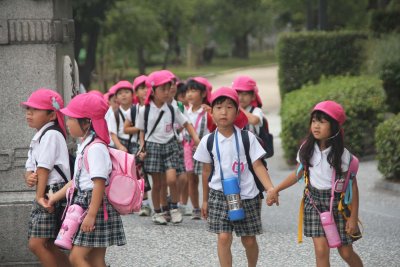
They wore school uniforms, with green or pink hats. |
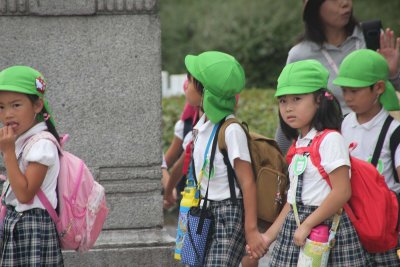
Close-up of the school girls. They were very well behaved. |
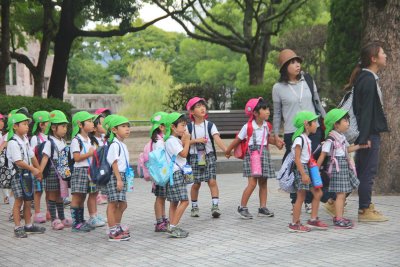
Teachers who were chaperoning the girls. |
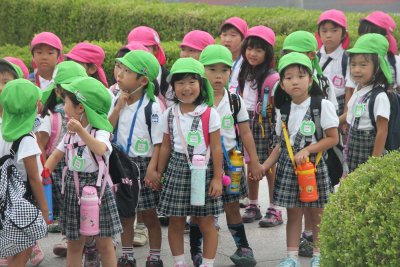
The girls looked like they were in kindergarden, aged about 5 or 6. |
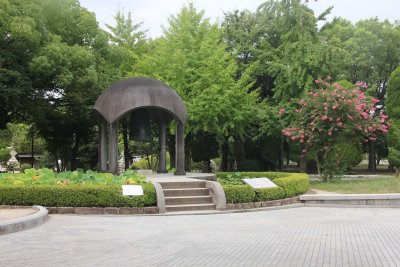
The Hiroshima Bell of Peace. |
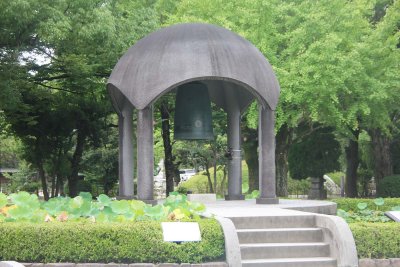
The bell is a symbol of the aspiration of the people of Hiroshima that all nuclear weapons should be eliminated. |
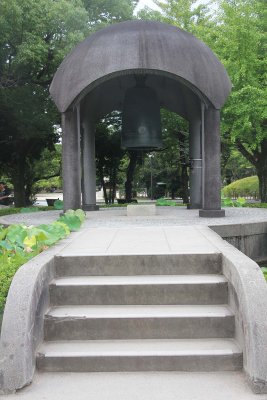
The bell was dedicated on September 20, 1964. |
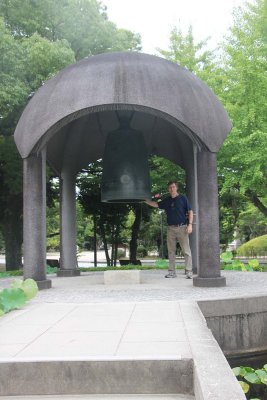
Me ringing the Bell of Peace. |
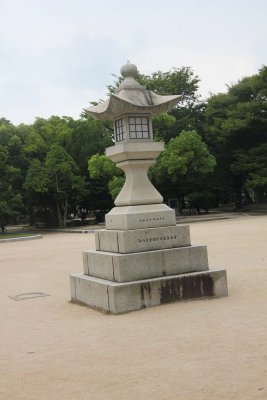
Hiroshima Peace Memorial Park lantern. |
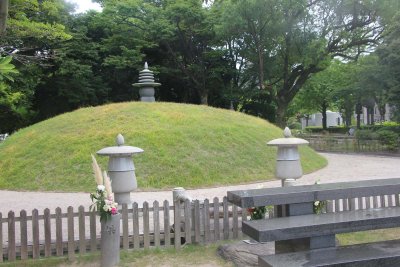
The Atomic Bomb Memorial Mound is a grass-covered knoll that contains the ashes of 70,000 unidentified victims of the bomb. |
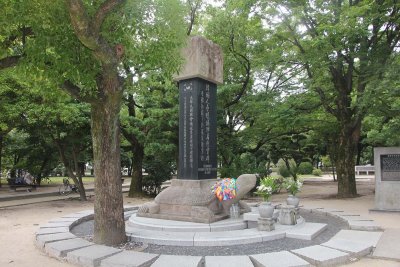
Cenotaph (empty tomb) in Memory of the Korean Victims of the A-Bomb. |
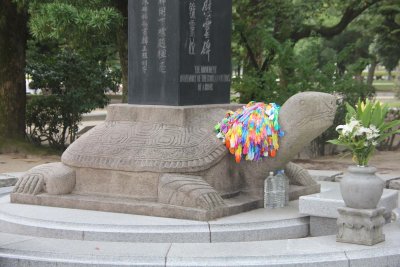
Among the 400,000 people who were killed or exposed to lethal post-explosion radiation, at least 45,000 were Korean. |
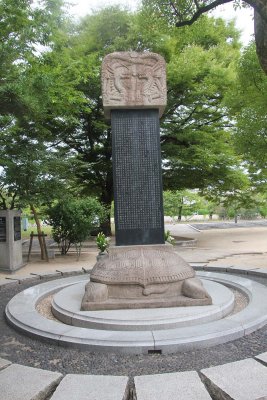
The monument, with Korean national symbols, honors Korean victims and survivors of the atomic bomb and of Japanese colonialism. |
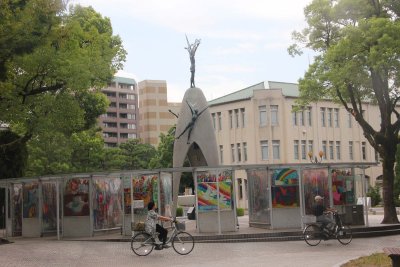
View of the Children's Peace Monument to commemorate the thousands of child victims of the atomic bombing of Hiroshima. |
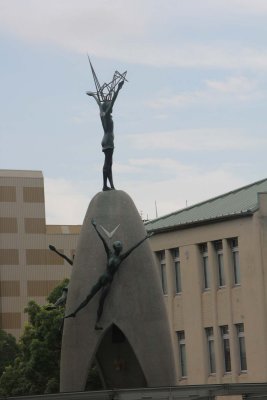
Sadako Sasaki, one of the child bombing victims, is immortalized at the top of the statue, holding a crane. |
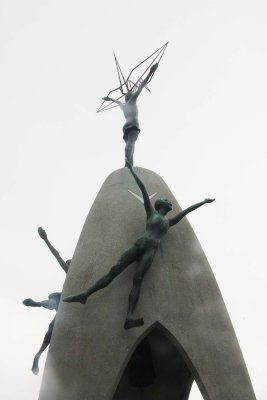
The monument was built with money from a fund-raising campaign by Japanese school children, including Sadako's classmates. |
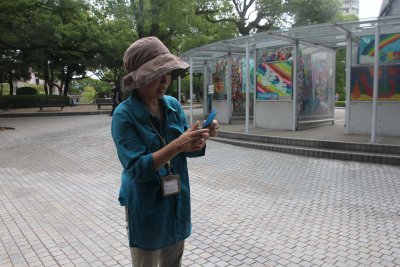
Our excellent tour guide, Mary, who showed us around Hiroshima Peace Memorial Park. |

Modern concrete design at the end of the Hiroshima Pond of Peace. |
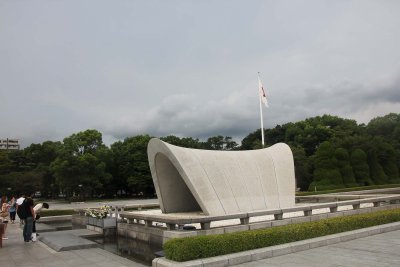
The Memorial Cenotaph (empty tomb) that holds the names of all of the people killed by the bomb. |
![The cenotaph carries the epitaph, please rest in peace, for [we/they] shall not repeat the error.](https://a4.pbase.com/g1/73/691773/3/146240108.JhhnkbWY.jpg)
The cenotaph carries the epitaph, "please rest in peace, for [we/they] shall not repeat the error." |
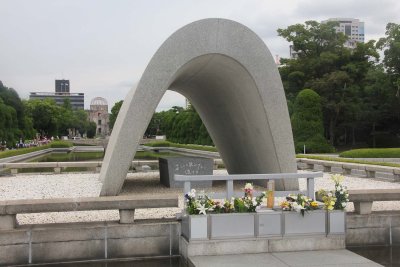
The epitaph is controversial, having been interpreted by some right-wing circles in Japan as an admission of guilt. |
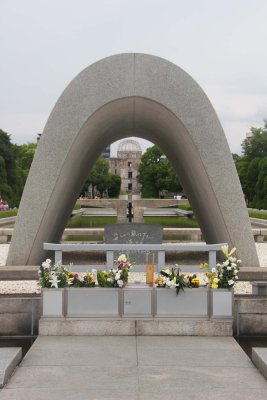
The A-Bomb Dome is perfectly framed in the center of the cenotaph. |
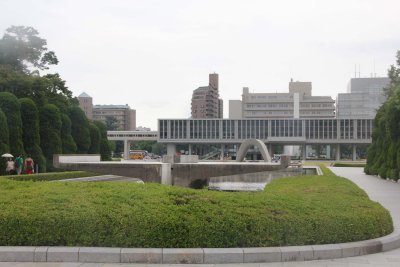
View of the main building of Hiroshima Peace Memorial Museum, which is dedicated to educating visitors about the bomb. |
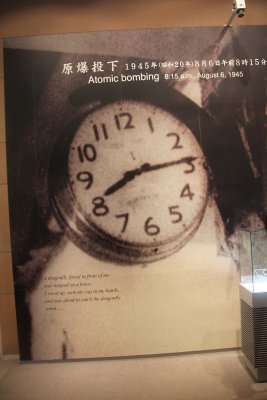
Clock in the Hiroshima Peace Memorial Museum showing the time and date of the atomic bombing. |
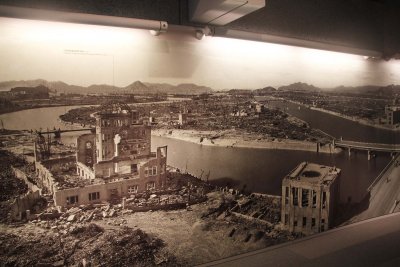
Photo showing the devastation in Hiroshima, including the remains of Prefecture Industrial Promotion Hall (now the A-bomb Dome). |

Composite photo of the destruction after the atomic bombing. |
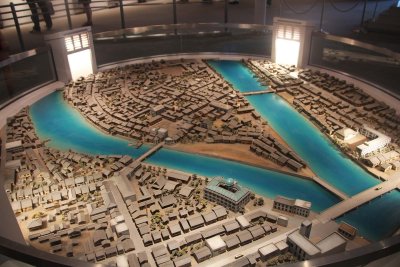
Model of what Hiroshima looked like before it was destroyed. |
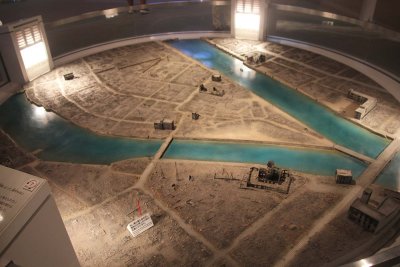
Model of what was left of Hiroshima after the atomic bomb. |
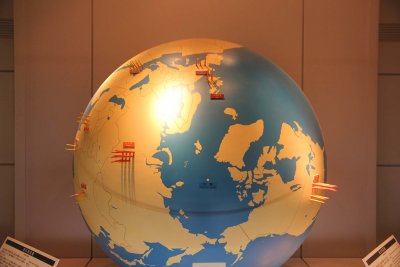
Since WWII, Japan has been a non-nuclear country. This globe in the museum shows all the world countries with nuclear weapons. |
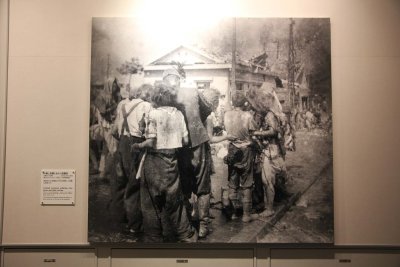
First photo that was taken after the bombing showing burned people. By December 1945, 140,000 people died because of the bomb. |











